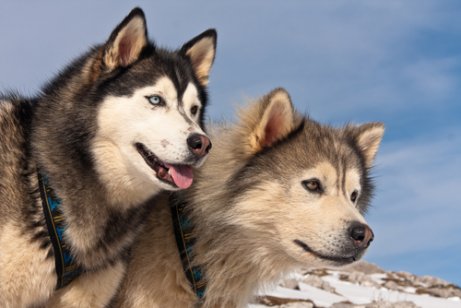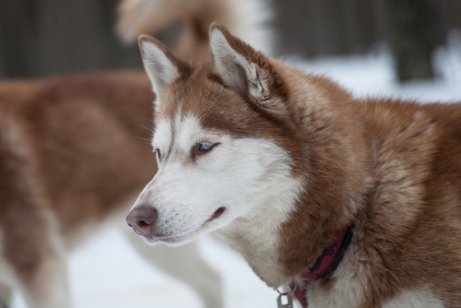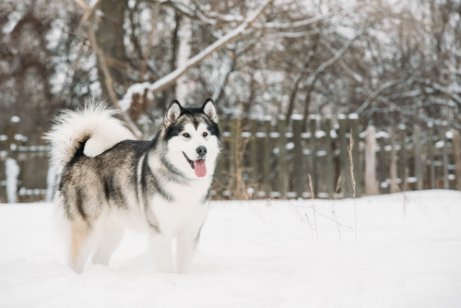Differences Between Alaskan Malamutes And Siberian Huskies

Both breeds live in cold regions, pull sleds, and look similar to wolves. However, there are several differences between Alaskan Malamutes and Siberian Huskies. In this article, you can learn all about the differences between them.
What are the differences between Alaskan Malamutes and Siberian Huskies?
Both breeds belong to the 5th group of Nordic sled dogs. If you are thinking about adopting either of these breeds, you should know they require a good amount of exercise on a daily basis and don’t handle high temperatures well.
At first glance, you could say these breeds are the same. However, there are several differences between Alaskan Malamutes and Siberian Huskies.
1. Origins
From their names, you can already tell where each breed originated. The Malamute originated in Western Alaska within the Inuit tribe at the end of the 19th century. When the gold rush began in the area, many people began to adopt Malamutes. Because of this, it is a popular breed in Canada and the United States.
On the other hand, Huskies come from a cold and unpopulated area of Siberia, thanks to the Chukchi tribe. From them, having one of these wolfhounds as a companion was a source of pride. They symbolized strength and power.
2. Use
From the beginning, both Alaskan Malamutes and Siberian Huskies were used to hunt and to transport food, wood, or even people on sleds. However, Huskies were soon given other responsibilities. They were used to provide heat and protection to women and children during cold, snowy nights. Plus, they were used to travel long distances due to their physical stamina.
3. Size
One of the main differences between Alaskan Malamutes and Siberian Huskies is size. Both are large breeds, but the Malamute is taller and heavier. On average, Malamutes can measure up to 63 cm tall and weigh 35 kilos. Huskies don’t usually go over 60 centimeters or 30 kilos.
4. Eyes
Undoubtedly, one of the most prominent differences between Alaskan Malamutes and Siberian Huskies is their eyes. Huskies have light-colored eyes – blue or green – and can even have light-colored irises. Malamutes always have dark eyes that are either black or brown.

5. Head
At first glance, the Malamute has a larger and square face than the Husky. However, they both have mostly white faces with dark lines that make it seem like they’re wearing masks. At the same time, they seem to be wearing a hat or coat over their foreheads, which are darker than their snouts.
In regard to their to ears, the Malamute has them smaller and wider at the base. The Husky’s ears are longer. However, both of them have triangular shaped ears that are pointy.
6. Coat
Another difference between Alaskan Malamutes and Siberian Huskies is their coat. Although both breeds have a double layer of fur, their colors can vary (white, gray, brown, black, red). The Malamute’s fur is longer and rougher to the touch, but the Husky’s fur is very soft and medium length.

7. Personality
The Malamute is very obedient to any member of the family. It doesn’t get emotionally attached to one family member because it’s used to being in a pack and enjoys being around other people and animals. This breed is also known for its nobility, loyalty, and dedication. If you train these dogs at an early stage of life, it will never disobey an order.
As for the Husky’s personality, it’s gentle, affectionate, friendly, extroverted and enjoys being around other dogs. It can become aggressive with strangers or when being in an unfamiliar surrounding. This breed is very intelligent, docile, and needs lots of physical and mental stimulation. Therefore, agility games are perfect for a husky.
Finally, Alaskan Malamutes and Siberian Huskies don’t differ much when it comes to health. Both tend to suffer hip dysplasia and eye problems, such as cataracts. Neither dog likes the heat and can become obese due to overeating and a lack of exercise.